Where is the Digital Revolution Headed Next in Packaging Operations?
From personalized printing and serialization to smart sensors and data collection systems, digital advancements are transforming the day-to-day lives of packaging professionals. What’s still to come?

From personalized printing and serialization to smart sensors and data collection systems, digital advancements are transforming the day-to-day lives of packaging professionals. What’s still to come?
Smartphones. The cloud. Serialization. Global connectivity. The ongoing digital revolution promises to change the world in ways we can’t even imagine—at both consumer and corporate levels. The implications for our personal and professional lives range from making it easy to share just about anything to saving time by enabling quicker collaboration across companies.
Consider, for example…
• Big beverage brands like Coca-Cola, Absolut and Anheuser-Busch have leveraged digital printing in recent years to create successful personalized packaging campaigns. Digital packaging and label printing—valued at $10.5 billion in 2015—expects to grow at a 13.6% compound annual growth rate (CAGR) to 2020, according to The Future of Digital Print for Packaging to 2020 study from Smithers Pira.
• In January 2015, pharmaceutical manufacturers were required to comply with the lot-level traceability requirements of the Drug Supply Chain Security Act (DSCSA). Deadline for the next phase—serialization of pharmaceutical products—is November 2017. And by November 2023, companies will need to have a full electronic, interoperable traceability system at the package level in place.
Patient safety is the main driver. But economics factor into it, as well. The global economy loses about $10 billion annually from counterfeit and substandard medicines, estimates scholar and economist Roger Bate of the American Enterprise Institute.
• By 2025, the economic impact of the Internet of Things could top $6 trillion dollars, according to McKinsey & Co., with factories being the largest user sector. Packaging machinery manufacturers and engineers at end-user companies are already tapping into the wealth of information from today’s smart sensors to improve packaging machinery performance.
Packaging designers are also taking advantage of IoT technologies, as Anheuser-Busch shows with its Oculto beer bottle.
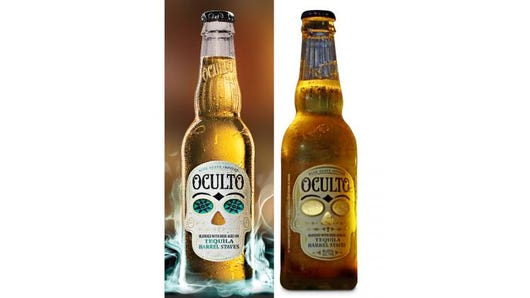
Anheuser-Busch leverages the Internet of Things for the first time for this limited-edition bottle of its Oculto beer. Plus, a smart label illuminates LEDs that are powered by paper batteries.
Recognizing a major trend at a critical point in its expansion, Packaging Digest organized a roundtable of packaging experts, sponsored by Videojet Technologies Inc., to discuss various aspects of “digital” in packaging operations, including serialization and a look at what’s still to come.
Here are highlights of the lively and insightful discussion.
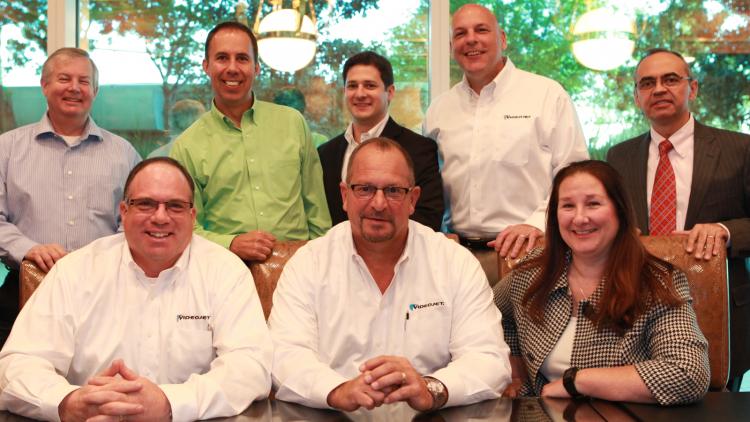
Our topic experts
(Top row, left to right) Dirk Rodgers, principal, Dirk Rodgers Consulting (and founder of RxTrace.com); Scott Biondich, president, Packaging Innovation & Design; Tim Kearns, national account manager, Videojet Technologies Inc.; John Nobers, director, Systems Solution Group, Videojet Technologies Inc.; and Jorge Izquierdo, vp, market development, PMMI, The Assn. for Processing and Packaging.
(Bottom row, l to r): Eric Davis, national sales manager, Videojet Technologies Inc.; Jim Kerper, sales manager, North America, Systems Solution Group, Videojet Technologies Inc.; and (moderator) Lisa McTigue Pierce, executive editor, Packaging Digest.
What has been the impact of “digital” on packaging and, specifically, on serialization?
Scott Biondich: The biggest thing that strikes me is the amount of information that’s accessible to everybody now and the speed at which information travels or the speed that consumers can now get information from a package on their phone.
So it’s about speed and making people better informed.
Dirk Rodgers: My area is mostly drug serialization. Some of the regulations are going global. They are spreading in countries like the U.S. and the European Union where everyone’s got cell phones and smartphones.
But they are also in Africa. In fact, some of the African countries have had serialization regulations on drugs for a while now, before the bigger countries. People there have cell phones that they can use to authenticate the drugs using a scratch-off code. So it’s not just happening in the big countries, it is global.
The U.S. pharma supply chain has some built-in protections. Some of it is the way the supply chain is designed or operates; some of it is regulation. But it’s the safest supply chain for drugs in the world. It’s not perfect, though; there are some problems. The hope is that serialization will address those problems.
I’m skeptical that some of those problems will actually be solved by serialization. But with the new Drug Supply Chain Security Act, I think the biggest impact will be the lot number, which will be on all drugs for the first time in a machine-readable carrier.
Speaking of machines…Jorge, how is “digital” changing packaging production and operations?
Jorge Izquierdo: In terms of digital information, packaging machines currently are taking advantage of different types of sensors that can acquire more information from the equipment. That’s much more economical to do now and offers a number of opportunities to increase reliability and productivity.

Packaging machines currently are taking advantage of different types of sensors
that can acquire more information from the equipment. That’s much more
economical to do now...
— Jorge Izquierdo, vp, market development, PMMI,
The Assn. for Packaging and Processing Technologies
Izquierdo: Something that is still an issue, though, is the communication between machines and the challenge of making that happen with different brands, different suppliers or different generations of equipment.
At the operations level, communication is happening. However, communication from the plant to the enterprise level is still in the works and would benefit from standarization. It seems the technology is there. It’s just a matter of agreeing on the right protocols to do it. As a consequence of this ability to communicate, we are now inundated with data.
We are storing tons of data that nobody uses, but we still need to keep it. The challenge is how to turn all that data into actual information.
Rodgers: With serialization, the granularity of the data that you’re collecting and having to keep is so tiny—it’s down to the individual pack. The value of any individual piece of information is miniscule. It only has value when we look at a massive quantity and start picking up patterns or looking for information from a mass of data.

The value of any individual piece of information is miniscule. It only has
value when we look at a massive quantity and start picking up patterns...
— Dirk Rodgers, principal, Dirk Rodgers Consulting
John Nobers: The cloud’s capability to expand data capture and retention is tremendous. You have ample space to retain and maintain that data. And it’s not so much regulatory agencies but it’s consumers who have access to that data. They can see instantaneously how, what, when and where their package is from Amazon, for example. Consumers are so much more educated and have so much more access.
That goes two ways, though. The more educated someone is, the more on your toes you have to be.
The second part is, how much more can you engage them? When we can digitally connect with a consumer, we can look at that consumer’s buying behavior.
Jorge, you mentioned automation and the ability to share that information and make an easier translation. Machines don’t need to worry about languages. Technically, when you put a digital code on something, it doesn’t care about whether it’s French or German or Russian or English. It knows what that code is and it interacts seamlessly across the globe. It’s great because you can do things you have never done before—make things safer, make demand processes better, make consumers more educated, make supply chains more efficient.

Machines don’t need to worry about languages. Technically, when you put
a digital code on something, it doesn’t care about whether it’s French or German
or Russian or English. It knows what that code is and it interacts seamlessly across the globe.
— John Nobers, Videojet’s director, Systems Solution Group
People talk about technology and its negative impact. It interrupts our lives but also creates a world of opportunities for technologists, communicators and software people around the world. It connects people beyond a language or a region.
Regarding modeling and what you can do now with simulations and virtual design, it used to be a slow, painstaking process—now you can collapse that. Partnering within a supply chain and having good communication structures have allowed these things to happen quickly.
Biondich: Here’s another area…We have all seen the commercialization of customized and personalized packaging—we are still in the infancy of that. It’s going to move in directions that we are not really sure where it is going yet.
We are going to see more speed-to-market because of digital printing. You can turn things around right away and get them out to consumers. Up until now, it’s been difficult to do that as it’s been very expensive. One of the keys here is about creating consumer experiences. Brands have a lot more power now through digital than they’ve ever had before.
There are some negatives, though. Some technologies are still fairly expensive so they haven’t reached a growth level where the prices are coming down yet. And some of the speeds are still slow, which impacts cost.
I think there will be a lot more progress in these areas. With 3D printing, for example, you can turn designs out so much faster than you could before.
The other thing I thought of when Jorge was talking is about some of the data collection systems now, where you can put an artificial skin on a package and see everything that package goes through when you put it through a production line.
Jim Kerper: From Videojet’s perspective, it’s digital capabilities—connectivity to enterprise systems and sharing of data through increased printer capabilities and Ethernet capabilities—that have helped us bridge the gap from static lot and batch information to something more dynamic, which is a unique identifier, such as serialization, and then the compilation and sharing of that data. We use a combination of printing technologies, scanning and visual technology to manage an individual package through the line to collect that data and then do something with that—hand it off, post it ourselves or share it with an enterprise system.
Biondich: You have more competition now. There are a lot of people moving in the direct package printing space, trying to eliminate labels.
Kerper: There is a lot of competition but we’ve had digital solutions that print directly on packaging since the beginning. It’s up to the manufacturer to print on a label or on the package with variable data.
Biondich: If direct package printing evolved quickly enough, it could eliminate digital label printing. So there is a bit of race going on right now.

If direct package printing evolved quickly enough, it could eliminate
digital label printing. So there is a bit of race going on right now.
— Scott Biondich, president, Packaging Innovation & Design
Eric Davis: Talking about digital printing, the biggest food recalls of late have been Class 2 recalls from mislabeled or undeclared allergens. Every day, I’m seeing news stories on some large recall, and it was simply because somebody didn’t put the right message on the label.
Using digital technology to print that information on the fly, rather than having it done pre-print, is certainly helpful because, at that point, you can manage that through data. We can be sure that packaging is correct.
Biondich: You made me think of something else. With all this digital technology, when it goes down, it’s a problem. You’re at work and your laptop quits working—it’s like “I might as well go home. It’s not working.”
Have Plan B already in mind!
Let’s talk about ecommerce. Most operations in a manufacturer’s facility are pallet-load shipping. Ecommerce and small-parcel shipping is a much different process, with completely different product protection needs. The vast majority of companies are outsourcing that small-parcel fulfillment. But, as the business changes, there’s a huge opportunity for that to be brought in-house.
Biondich: I totally agree. Most companies when they move into that space, they do it externally—they hire a contract packager.
The way it’s done today is people throw corrugated [packaging] at it. There is so much over-packaging when you’re buying something online versus what you would buy at the store to make sure the product is going to survive the transit experience.
There are some huge challenges in front of the industry, relative to buying though the internet or on your phone.
Also think about the floor space requirements in a production facility for e-commerce shipping, as well as the need for new skills and knowledge for employees.
Biondich: That business model you were talking about—going to external co-packers—is fairly typical unless it is something super-secret that a company doesn’t want others to know about. And if they are not sure a product is going to take off, they don’t want to invest in their own plant. Then if it takes off, they will invest internally.
Izquierdo: If a company is hiring a third party to do fulfillment and shipping, they have control over it. But if the consumer is buying your product over the internet from Walmart, Walmart will decide to pack it the best way they think. So the company doesn’t really have control of how that fulfillment is happening and of the consumer’s experience when they get the package. That is a challenge.
Jorge, maybe you could speak to this…in the past, a plant’s packaging production personnel have always had a somewhat strained relationship with the folks in IT, information technology.
Izquierdo: Many packaging machines now have the capability to communicate to the internet, to the OEM [original equipment manufacturer]. There is a benefit for fast service or performance—that’s the good side.
On the other hand, there is a significant concern from companies about allowing others into their networks and giving them access to their information. Five years ago, that was a significant barrier. Only a few companies would allow that if they had a problem—to turn on the switch, let you take a look to see what was happening and then turn off the switch. The regular IT staff was not understanding because it’s a different security at the plant level. Protocols and systems are needed to make sure that you can offer access to someone outside your company to one piece of equipment without them getting access to the next equipment, or to the company’s secret recipe they use to manufacture their products. Now there is more awareness of that. I think IT is better trained. It’s still not ideal, but the situation is improving.
Davis: Videojet’s Video Remote Service allows our technical support team access into the parameters to see if our customers’ machines are having issues. It’s kind of what Jorge was saying: turn on the switch, turn off the switch—we have that capability. You don’t have to use it that way—you can have it open the whole time or you could just have it local to the plant.
It can also be tied into the cloud. That allows us to do predictive work, which helps us to keep our customer’s [packaging line] up better.
The security aspect has always been a question. Some IT folks seem to be more on board then others. It depends on that particular company and how well they manage their security within their own organisation. For folks who are concerned with that, we tell them to put this on a separate server and we won’t have access to anything else.
This technology allows you to enhance your service and let customers know there are things you can share with them that maybe they didn’t even know they needed or wanted.
Biondich: That’s true.
But I don’t think we understand how all this digital technology is going to change and what businesses that have been around for decades and are successful are going to be wiped out overnight. It has started in commerce but I think it will spread even to innovation and how we do innovation.
Ten years ago, open innovation was all the rage. We are going global because of digital technology. Somebody who has an idea on the other side of the world is going to be able to connect with a company that is looking for an idea because of these systems allow that free exchange of ideas and information.
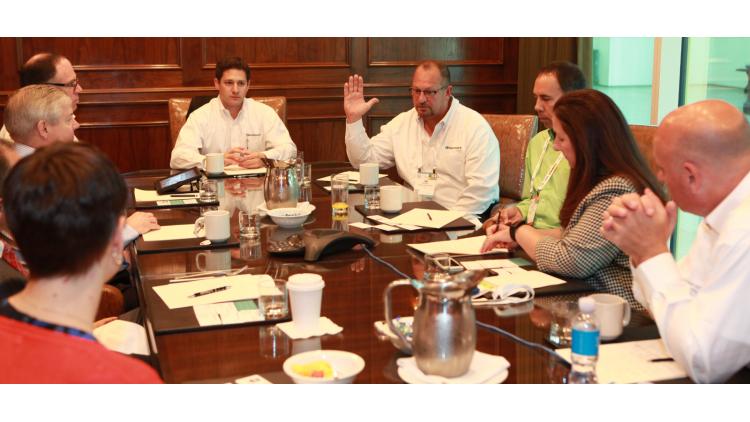
Nobers: From a business standpoint, technology is going to carry us to the ultimate achievement. Because technology is going to enable unique serialization, for example, faster, adoption will come to the industry instead of being forced by regulation.
Rodgers: Not in the pharmacy supply chain. People are trying to figure out—once they’re required to put serial numbers on drugs—how they are going to recoup some of the investment. No one has figured out how to get it all back.
The problem is that the biggest value goes to people downstream scanning the serial numbers that you put on. If you could see all that data for free, it would be very valuable. But that data is owned by the person who scanned it, not you. You put the number on and that might be the last time you see it unless you buy back access to the data.
In the U.S., our drugs are repackaged [in the pharmacy]. Drugs are rarely dispensed in the package that the manufacturers put the serial number on, except for some types of products, such as inhalers and birth control pills. So [the manufacturer’s package with the serial number] never reaches the consumer.
Tim Kearns: Companies can reach the end consumer with a pharmaceutical product and these companies can figure out a way to build brand awareness and value back. But when it gets to the pharmacy and the pharmacist takes it out and puts it into amber vials, you lose that packaging and the brand.
Rodgers: This is the only country in the world that does that. In every other country, you get the pack the manufacturer created.
Nobers: Look at consumer buying behaviors. People are ordering online. The common destination for pharmaceuticals used to be a pharmacy, but now it’s a store with a pharmacy in it—and even that is becoming the norm less and less. Trends, societal changes and consumer connections will eventually drive behaviors. “I don’t need to go to the pharmacy to pick up my medicine. I can go online to get exactly what I need delivered to me.”
Izquierdo: Just a comment on regulations and how things are changing. Some big brand owners have been proactive and develop their own standards without waiting for government agencies to come up with regulations because the impact of having a recall, the impact of social media, is so strong. Public perception can hit so hard that companies act before there is regulation. Sometimes companies have guidelines that are stricter than the regulations.
Biondich: That’s marketing—companies are marketing a risk to their advantage.
Izquierdo: Consumers are really the ones pushing for this to happen.
Nobers: Because news gets out so fast. What’s a greater risk—investing in equipment to ensure food safety or finding out the hot dogs you sent out are not supposed to have lactose in it and it’s on the news and the internet and your brand takes a huge hit?
Davis: I got a call one day from a specific plant in the poultry industry. They see what is going on. They know “If that happens here, we are done. Close the doors.” That’s exactly what they told me. “We have to protect ourselves. So here is our plant. You have full access. Tell me how we protect ourselves.” So they now do a decent job of tracking their products.
At another plant, they said, “We know in four days exactly where that came from.” I said, “That’s awesome. How would you like to do that in 30 seconds?” It’s great they have a paper trail, but they don’t have four days.
Nobers: Standard disaster recovery plans are expected. Not within four days, though. Now it’s like 40 seconds, and with the confidence in that integrated system within their supply chain to provide that for their business and customers.
Where are we headed in the future?
Izquierdo: The consumer is leading many of the initiatives. Consumers now have all this information available and have the power of sharing their experiences.
Davis: In the food space, companies don’t know what they don’t know right now, to a certain extent. Plant managers may wake up in a cold sweat thinking about “What happens if…?” By the same token, there are more companies that think “We have enough regulation to deal with. We don’t want to do any of this.”
We don’t yet know what the future holds specifically for the food industry. But I think we’re going to see more impetus from consumers, who expect more.
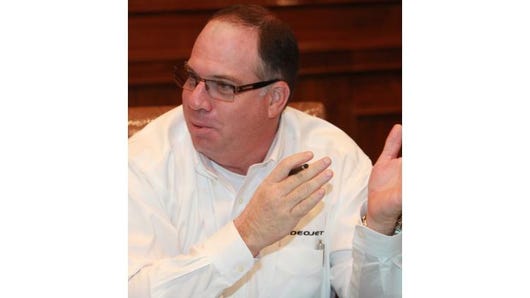
We don’t yet know what the future holds specifically for the food industry.
But I think we’re going to see more impetus from consumers, who expect more.
— Eric Davis, Videojet’s national sales manager
Rodgers: In the U.S., food traceability is more likely to revolutionize the supply chain quicker than pharma traceability. There will be pharma traceability because it is mandated. But you can make the argument that there are some benefits that brands will get from food traceability that you just won’t see in pharma. It seems odd, you’d think it’s reversed. You’d think there would be better justification for tracing things like drugs because they can kill you. But there are many differences between the food and pharma supply chains.
When I look at pharma, it’s big companies at the beginning of the supply chain and then you see the small companies and mom-and-pop pharmacies. It’s just the opposite, in some ways, for food. You have an individual farm—a tiny operation that can have a huge impact on the brand if they have to do a recall—at the beginning of the chain.
Nobers: That’s a really good example. You have scale versus special operations. Our role—along with manufacturers, industry experts and regulatory bodies—is trying to find those channels and fill those gaps and enable those connections between the product and consumer.
The biggest crossroads for the future is how it will come together. When you talk about speed and information, those two things create a need to be flexible and adaptable, and consumer- and product-orientated. Flexibility and adaptability are the key to surviving and continuing to be a successful operation.
Rodgers: Another difference between food and pharma is, the reason you put a serial number on a drug is to detect and expose some criminal activity. In food, there is no crime behind something that happens. You are trying to track backward and figure out the sources of a problem. That’s a big difference between the drivers of serialization in those two supply chains. It’s hard to have parallels for serialization for drugs and for foods.
Kerper: Many clients cannot see a return on investment associated with serialization and traceability. The biggest things that will happen in the food and beverage sectors are targeted recalls and the speed of recalls. Serialization identifies lots down to specific quantities. If companies have supply chain visibility, they know exactly where to find the products they are looking for. The peanut company in Georgia that tried to recall three years of product and ultimately had to close the doors because they had to recall everything they ever made, they had no visibility.
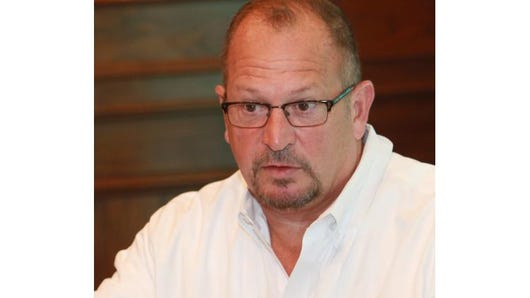
If companies have supply chain visibility, they know exactly where
to find the products they are looking for.
— Jim Kerper, Videojet’s sales manager, North America,
Systems Solution Group
I have had big pharma ask us to help identify an ROI with this because all they see is compliance for the sake of compliance, and a lot of money being spent. Companies can leverage that security to the consumer for foods and pharma. “We’ve got your back and we know what we are doing.”
Rodgers: Big pharma chains have asked consumers in focus groups, “How would you feel if you saw a serial number?” “I don’t know. Why would you put a serial number on it?” “In case there is recall, or a counterfeit.” “What?! Do I have to worry about counterfeits?!” It was fear. What would happen if you were in fear? People said, “I would probably stop taking my drugs.” Well, we don’t want that.
Izquierdo: At home, we have a frequent user card for Wegmans grocery store. A couple of times this year, we got a message from them saying “Sorry to call, but that chicken you bought has been recalled. If you have the chicken, please bring it back.” We ate the chicken already, though. We got three or four calls this past year—do you get the impression it’s safe to buy from them?
Rodgers: That’s what I was asking: Does it make you feel safe to buy from there or does it scare you?
Davis: We see that in our segment as well. Some clients will announce to consumers they are doing something about it. Others want to be more secretive. Personally, as a consumer, I would like to shop at Wegmans because they are looking out for me.
Rodgers: You can bet Wegmans did not implement this without doing research. They know the majority of people prefer to be aware of it.
Izquierdo: If you ask them “Do you want to get the call?” they would say yes. But when you get the call and you already ate the chicken, the feeling is a little different.
Rodgers: So why wouldn’t a pharmacy do the same thing? Because there are recalls happening all the time and, for some of those recalls, you might still have the drug in your cabinet. But is anyone calling?
Maybe in the future, because of digital technologies, all that will be automated.
Rodgers: Not until that lot number has a machine-readable code because your pharmacy doesn’t know now what lot number you’re getting.
Some benefits of all this information is realized by sharing it. What about the issue of security?
Kearns: Managing security impacts other industries. It’s actually developing new industries. There is a lot of opportunity. Opportunity for some may be detrimental for others.

Managing security impacts other industries. It’s actually developing new industries.
There is a lot of opportunity. Opportunity for some may be detrimental for others.
— Tim Kearns, Videojet’s national account manager
Rodgers: You talk about new companies being formed…I find it interesting that the company that these repositories are moving to is Amazon.
Amazon is the gold standard, whether it’s deserved or not, for security and data in the cloud. So the companies that are starting to do pharma serialization and help companies with data exchange have their repositories in Amazon’s cloud. Amazon has learned a lot about security on their own website to keep criminals from buying products with credit cards.
Nobers: When we say security, we think about security of transactional information but there is also a criticalness of security of a company’s market data, their consumer interactive data.
SIDEBAR: Term limits
Our roundtable conversation centered around “digital,” with a focus on serialization.
Digital is a pretty broad term. So what do we mean by it? Computers, smartphones, the Internet of Things, ecommerce, information technology (IT), social media, digital printing and whatever else you think is digital, whether it be mobile or any other kind of electronic apparatus.
We define “serialization” as a way of coding individual or a group of packages with a specific sequential number. With this number, companies can then track and trace products throughout the supply chain.
About the Author(s)
You May Also Like




